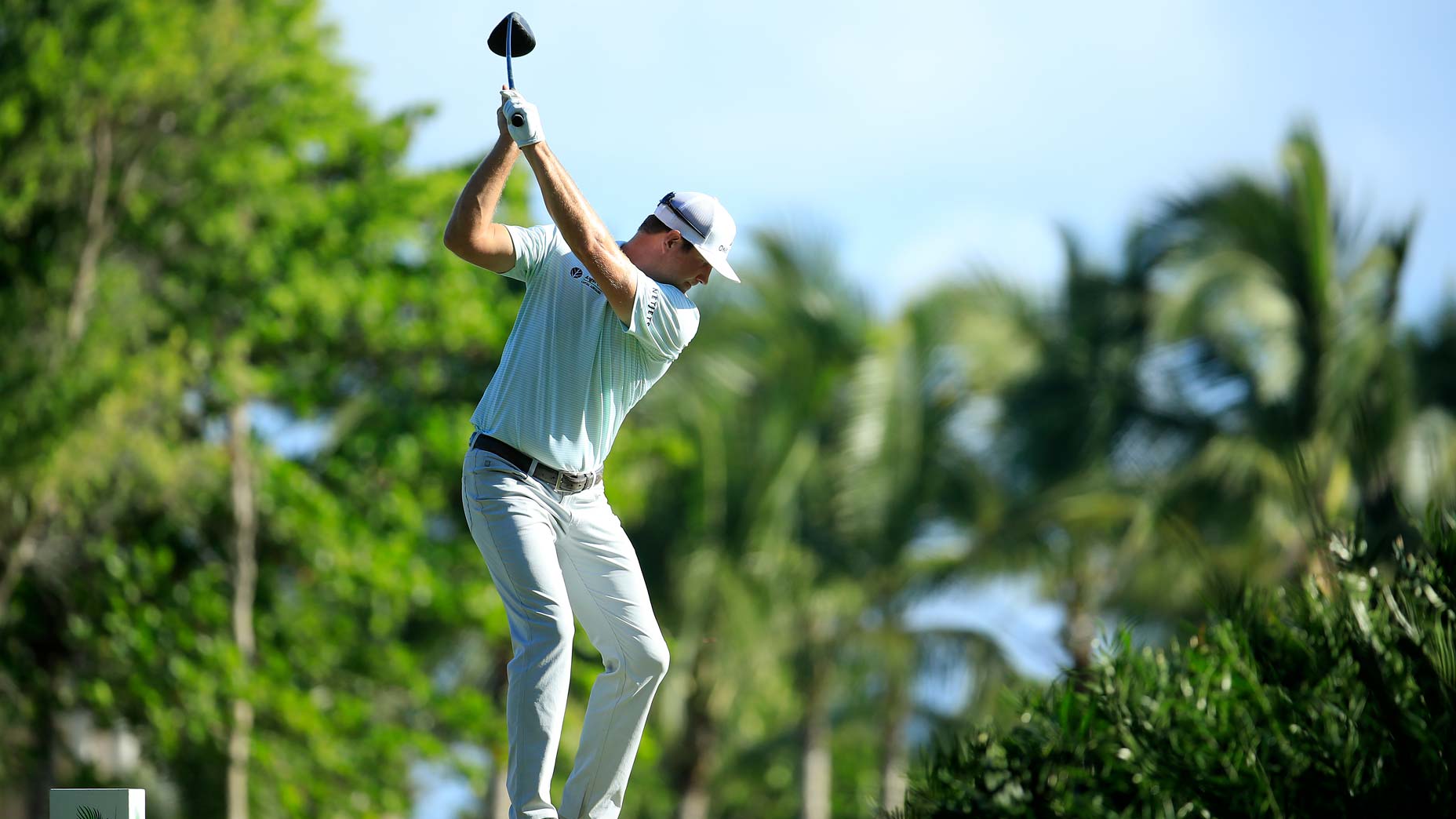
Hudson Swafford showcased a wide swing arc on his way to victory in the Dominican Republic last week.
Getty Images
I love a story of success. I also love a story of redemption and recovery. We saw a story of recovery unfold in the Corales Puntacana Championship down in the Dominican Republic last week.
Hudson Swafford rebounded in the biggest way from injury-plagued 2018 and 2019 PGA Tour seasons. After suffering rib and foot injuries over the past two years, Swafford claimed his second career Tour victory at the Corales Puntacana, besting Tyler McCumber by a shot.
As you all know, doing anything while hurt is difficult. But imagine for a minute what is must be like to compete against the best in the world without a full cache of weapons. Not only is it physically challenging, it takes a mental toll, too.
A cool story indeed, and there is much we can take away from it. Here’s what you can learn from Swafford to emulate his rock-solid ball striking.
Width is the Key
To me, every great golf swing possesses a consistently wide arc of the handle (of the club) and a consistent radius of the clubhead throughout its journey.
Essentially, the bigger (wider) the arc around which the clubhead travels — assuming that it is decently on plane and well controlled — the farther the ball will travel. Through the years, greats such as Jack Nicklaus, Tiger Woods and Greg Norman have advocated a wide swing arc, especially away from the ball and through contact.
To quote the Golden Bear: “For me, creating a large arc has always depended on extending the clubhead fully away from my body in the first part of the backswing, then extending it fully again as it ‘chases’ the ball after impact.”
Beyond an uptick in power, there are a myriad of benefits to a wider swing arc. Notably, it reduces the need to react and ‘save’ shots with unnecessary wrist and hand action (picture Steve Stricker), and it aids in tempo and timing (picture Justin Rose).
Get Wide
Expanding the width of your swing arc is as easy as recognizing the influence of each arm on either side of the swing. For right-handers, the right arm governs the width of the backswing and the left arm controls the width in the downswing.
Delving a little deeper, each arm bends at the elbow and the wrist on either side of your swing arc. The less the elbows fold, the farther the handle of the club will be away from the body, i.e. the wider the arc of the swing. Use that theory to expand the arc of the handle and, by extension, the clubhead.
A Width Drill
Hold the club with your trail hand only around the middle of the grip. Assume your athletic posture and, as you keep your head stable, swing the club back to around shaft parallel to the ground. Look over there and notice an absence of fold in the elbow and wrist. Now, maintaining the stable head and keeping the club in the same area, reach over to the club and slip your lead hand onto the grip. You will feel extension and a little rotation across your torso. You will notice how you lead shoulder has traveled away from the target, and you will feel a little force on the club. Next, maintain that attitude complete your backswing. It should feel bigger, wider, more stretched and certainly powerful.
To practice the through swing side, reverse the course. Hold the club in the lead hand, move to shaft parallel on the follow-through side, hold it and then, while keeping your eyes trained on where the ball would be, slip your trail hand onto the club. I am sure it will be enlightening, and a little challenging as well. This is what great ball strikers do and Swafford is a beautiful example of it.
Latest In Instruction
"ball" - Google News
September 30, 2020 at 10:08PM
https://ift.tt/36jLjBD
How a wide arc can generate power and improve ball striking - Golf.com
"ball" - Google News
https://ift.tt/39CKzGV
Shoes Man Tutorial
Pos News Update
Meme Update
Korean Entertainment News
Japan News Update


No comments:
Post a Comment